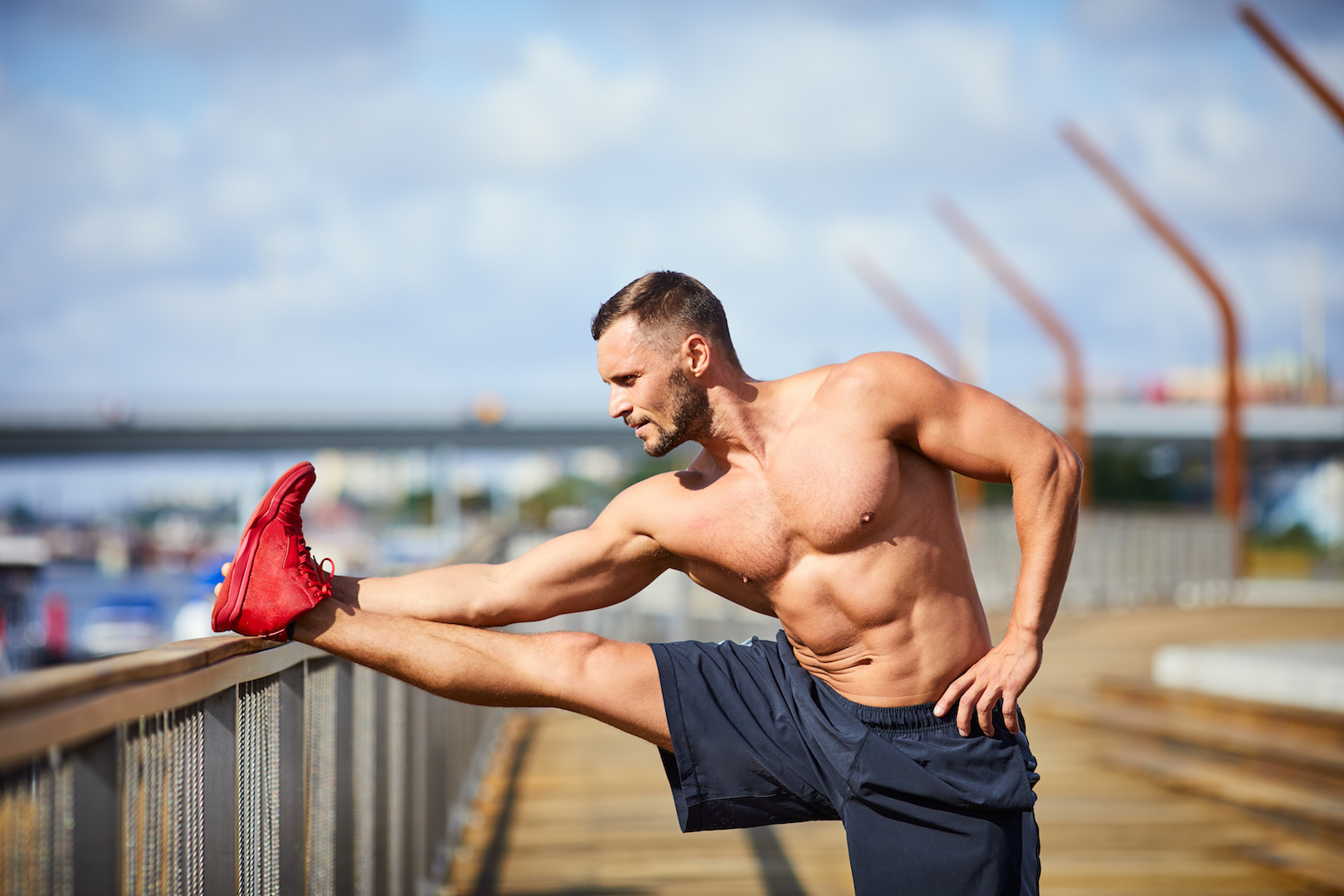arms
5 Stretch Starter Plan
Published
5 years agoon
By
fitinstyle
Being flexible is vital for athletes in sports as well as anyone else who focuses on fitness. If your body is tight then you can’t perform at optimal levels and leave yourself vulnerable to injury. If you compete in an iron discipline like powerlifting, bodybuilding, or strongman, then you need to stretch so the fascia, which is the skin around muscle fibers, can open up and allow you to send more blood to the muscle. There’s no getting around it. You need to be stretching on a regular basis.
This concept should be familiar to anyone that had a basic PE class. Most coaches took their students through a very basic set of stretches before they began whatever activity was on the agenda for that day. These five stretches are basic but if you haven’t focused on flexibility and agility then it will be a good start for now. Do these same five stretches every day after a brief walk or warm up period. Make sure you never try to stretch a muscle before warming up. It won’t be as effective and can lead to injury. Perform each stretch twice for 20-30 seconds with 10 seconds in between each. You can also do this routine after training as a cool-down method if you like.

Calf Stretch – Place your feet on a step with your heels hanging off of it. Make sure you can maintain balance or support yourself by holding rails. Lower your heels as far as you can without coming off the step. Hold on to a rail or banister for balance. You should feel a stretch in your heels, calves, and up to your knees.

Touch the Toes – This is a simple one but it isn’t done as much as it should be. Keep your legs straight. Reach down to your toes or as far as you can. You should feel a stretch in the back of the legs up to the glutes. Maintain this stretch and continue to breathe while doing so.

Quad Stretch – Stand at a doorway and hold on to one side of it with your right hand. Pick up your left foot behind you like you’re attempting to kick yourself. Grab your left foot with your left hand. Pull and hold your foot until you feel a stretch in the front of your thighs. If you can’t reach your foot in this manner, place it on a bench or seat behind you and slowly squat down with the other leg until you feel that stretch. Repeat with the opposite leg.

Chest and Biceps Stretch – Stand in a doorway or rack and hold onto the back of it with your hands and arms straight. Push your chest forward until you feel a stretch in the chest and shoulder area. If you make a fist with your hands and hold them in the doorway you’ll feel a stretch in the biceps as well. Don’t try to stretch too hard or too far. You should just feel a mild discomfort, not pain.

Back and Arms Stretch – Grab a pullup bar with both hands. Allow your weight to hang from it. Let your shoulders come forward for an extra stretch in the shoulder area. If you don’t feel comfortable from a pullup area, sit in a pulldown station and grab the handle with resistance on it that will allow you to feel this same stretch. Make sure you do this with both an overhand and underhand grip.
Once you get more comfortable with these, start looking for more advanced stretches you can do so you can maintain and even improve the health and function of your muscles.
arms
Improve Your Pullups With These 4 Tips to Add to Your Routine
Published
5 years agoon
March 30, 2019By
fitinstyle
While the bench press is probably the most popular upper body exercise there is, it can be argued that it isn’t the most accurate way to test one’s strength. The exercise that does serve that purpose is the classic and basic pullup.
Yes, I admit it’s easier to perform pulldowns on the cable machine and that there are newer machines that can better target and isolate the lats. But when it comes to overall strength, size, and improvement of performance, nothing beats this old-school move. The issue is that it’s tough to do, and even tougher to get better at. Work these four tips into your program and you will see improvement in both the number of pullups you do and the development of your physique.
Do What You Can
Chances are you might only be able to perform one full rep and that’s it. If that’s the case, then do one and take a short break. Then do another one. Perhaps you can’t do any without assistance. If that’s the case then use a power band or assistant machine and perform as many as you can with that level of help. Focusing on what you can’t do isn’t going to help. Focusing on what you can do and doing it to the best of your ability certainly will.
Do a Lot of Them
This simply means that you devote an entire workout to doing as many reps as you can of pullups and nothing else. This can be done in two ways. First, you set a time to commit to the workout and get as many reps as you can within that time limit. Let’s say you have 45 minutes. Do as many reps as possible and rest for a minute or so. Keep going but don’t lose count. Keep that number going so that when you’re finished you have a number to beat next time.
The other way is to do 100 reps in as quick of a time as you can. Whether that’s 10 minutes or an hour, it doesn’t matter. The goal is to finish 100 reps. Next time, your goal is to do 100 in less time than before.
Use Assistance Exercises
I don’t think the lat pulldown is better than the pullup. I do think that the pulldown version is a good assistance exercise to help you improve your pullups. I also think pullovers and rows can serve you well too. You can structure your back workout to help you improve areas you feel might be weaker so that you can improve development of that area and in turn, improve your pullup power. A sample workout might look like this.
Pullups – 4 sets to failure.
Wide Grip Pulldown – 3 sets of 8-10 reps.
Dumbbell Pullover – 3 sets of 10 reps.
Wide Grip Seated Row – 3 sets of 12 reps.
Practice
One issue that is overlooked way too often is that lifting isn’t just about picking things up. It is a skill and you need to work on improving that skill. This is true with pullups as well as any other movement. When you’re starting your session, take the time to approach the bar, grab the handles, and feel the muscles working. Your approach, setup, and form should be the same every time just like a powerlifter with the squat, bench, or deadlift. Doing this alone can go a long way in helping you improve the skill of the pullup.
Recent Posts
- Berberine Breakthrough: Uncovering the Top Health Benefits of this Powerful Plant Extract
- Berberine Benefits: The Natural Compound That Can Transform Your Health
- Berberine: Nature’s Secret Weapon for Optimal Health and Wellness
- The Ultimate Guide to Berberine: Unlocking Its Health Benefits and Healing Properties
- The Ultimate Guide to Berberine: Unleashing its Health Benefits for Blood Sugar Control, Weight Management, and More
Advertisement
Sponsored Ads
TRENDING
-

 HEALTH & WELLNESS5 years ago
HEALTH & WELLNESS5 years agoAcidophilus: A Probiotic Bacterium
-

 herbs3 months ago
herbs3 months agoThe Ultimate Guide to Ashwagandha Extract: Stress Relief and Optimal Health Unveiled
-

 HEALTH & WELLNESS4 years ago
HEALTH & WELLNESS4 years agoHerbs and Essential Oils to Fight Coronavirus
-

 TRAINING & FITNESS5 years ago
TRAINING & FITNESS5 years ago6 Ways to Decrease your Shoulder Pain!
-

 HEALTH & WELLNESS5 years ago
HEALTH & WELLNESS5 years agoWhy Muscles Get Sore
-

 DIET & NUTRITION5 years ago
DIET & NUTRITION5 years agoLow Carb Diet: Carbohydrates Influence on Testosterone
-

 Fitness5 years ago
Fitness5 years ago“No Pain, No Gain” True or Just a Fitness Myth
-

 HEALTH & WELLNESS5 years ago
HEALTH & WELLNESS5 years agoThe Best Shoulder Workout in Only Six Moves














